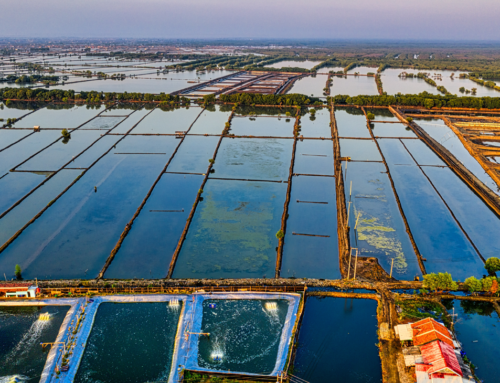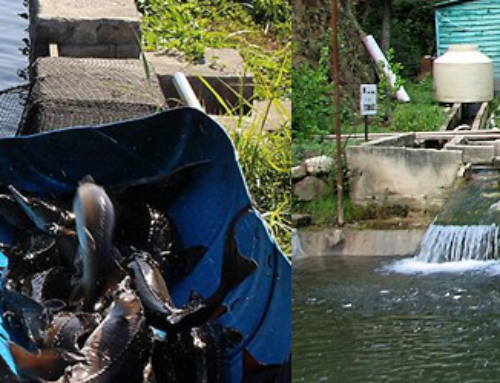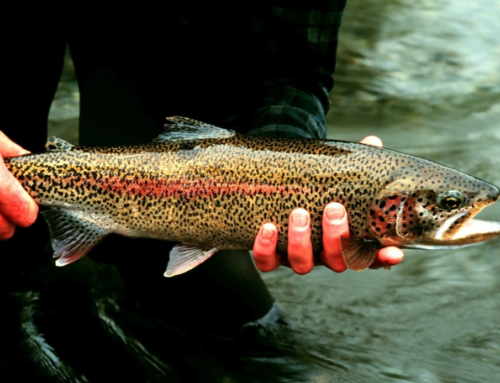Small Scale Fish Farming Business Ideas
1- Catfish Farming
Catfish are one of those fish farming business ideas that easy to farm in warmer climates. You can raise catfish both in the ponds and tanks. Generally, catfish is populous because of its health benefits and market demand. You can harvest farm-raised catfish at 18 months of age. And this ensures a quick return in this business. There are a number of catfish species, but the three most prominent ones are blue catfish, channel catfish, and flathead catfish.
2- Cod Farming
Atlantic cod is one of the most important commercial fish species in Northern Europe and North America’s eastern coast. Hence, it is getting popular increasingly. The market size for cod is usually 2-4 kg and is achieved 24-36 months after hatching. Therefore, if you want to start a cod farming business, then you must have a long-term planning.
3- Eel Farming
Eels are a carnivorous and catadromous fish. They are long snake-like fish with a smooth, slimy scale-less skin. When they are young they live in fresh water, but as they mature they migrate to the sea for breeding. Basically, Asia with China is the major eel producing places globally. However, Japan and Taiwan leading as the biggest producers.
4- Fish Hatchery
Starting a small-scale fish hatchery is another one of those fish farming business ideas that demands adequate skill and knowledge. Basically, fish hatchery is an artificial fish breeding center. And fish hatcheries provide juvenile fishes to the commercial fish farms. The business is highly profitable. However, it demands moderate capital investment and right strategic planning.
5- Grass Carp Farming
Basically, grass carp is a freshwater fish. The fish is popular as white amur in the United States. It inhabits lakes, rivers, and reservoirs. In farming grass carp, the major challenge is providing flowing water. Basically, flowing water and changes in water level are essential environmental stimuli for natural spawning.
6- Ornamental Fish
As the demand for aquarium business is increasing the demand for different types of ornamental fishes are also growing. The business is easy to start. Even, you can consider home-based. However, you must have some basic skill and knowledge about the breeding and rearing. Some of the most popular ornamental fish species are Goldfish, Bloodfin Tetras, White Cloud, Danios, Guppy, Black Molly etc.
7. Prawn Farming
You can raise freshwater prawns in concrete and earthen reservoirs, ponds, irrigation ditches, cages, pens and natural waters. However, pond culture is the most popular option for prawn fish farming. Most prawn farms use water exchange to keep dissolved oxygen levels high, as well as curing other water quality problems. And you can use paddlewheels as the most efficient method of increasing dissolved oxygen levels in pond water.
8. Rainbow Trout Farming
Actually, Rainbow trout is native to the Pacific drainages of North America, ranging from Alaska to Mexico. The meat is mild, with a delicate, nut-like flavor and the flesh is tender, flaky and soft and white, pink or orange. Europe, Basically, the rainbow trout is a hardy fish that is easy to spawn, fast growing, tolerant to a wide range of environments. North America, Chile, Japan and Australia are the major producers of rainbow trouts.
9. Rohu Farming – Labeo Rohita
Actually, rohu is the most important among the three Indian major carp species used in carp polyculture systems. Rohu is a eurythermal species and does not thrive at temperatures below 14 °C. It is a fast-growing species and attains about 35-45 cm total length and 700-800 g in one year under normal culture conditions. Hence, rohu fish farming ensures ROI within one year for the date of hatching.
10. Salmon Farming
Salmon is one of the most popular fish species with the most commonly farmed being Atlantic salmon. However, other two most popular Pacific salmon varieties are Chinook and Coho. Farmed salmon are vaccinated to prevent disease outbreaks and only on rare occasions do they require additional medications. Salmon feed is made to conserve wild fish stocks.
11. Shellfish Farming
Aquacultured shellfish include various oyster, mussel, and clam species. As the demand for seafood continues to surpass supplies, marine aquaculture is becoming recognized as the only serious solution for feeding the global population. Shellfish are a healthful addition to a balanced low-fat diet.And they are the good sources of iron, zinc, copper, and vitamin B12.
12. Shrimp Farming
Basically, shrimp farming is a popular aquaculture business. Additionally, both the freshwater shrimp farming and marine culture are popular globally. Marine shrimp farming is popular in the United States, Western Europe, and in some Asian countries. Usually, the shrimp production and the success of your business largely depend on the quality of your pond.
13. Silver Carp Farming
Starting and managing a silver carp business is comparatively easy. Additionally, the business demands small capital investment. Also, polyculture farming is possible with other fishes. Basically, it is a freshwater species living in temperate conditions 6-28 °C. Additionally, good water quality is very important to achieve a high hatching rate in silver carp farming.
14. Tilapia Farming
Tilapia is the third most popular fish in fish farming or aquaculture, with the first two being carp and salmon. Basically, tilapia are popular due to their high protein, large size, and growth capabilities. Tilapia is a tropical fish that requires warmer water to survive. The ideal water temperature is usually between 28 to 30 degrees C. Generally, tilapia fish require a cereal-based diet and don’t eat other fish, but they are also considered to be one of the most invasive fish species.
15. Tuna Farming
Tuna are carnivorous and eat other fish. Basically, these are saltwater fish and are important in the commercial fish farming industry. Japan is the biggest consumer of tuna. There are different species of tuna including, bluefin, yellowfin, and albacore. Tuna farming is somewhat complex. Because the fish are “massive” and are very active – so simulating their natural environment is extremely difficult. You can raise tuna in net pens offshore and in some cases in recirculation systems.
In the aquaculture business, both the small-scale and large-scale fish farming are profitable. Additionally, the business has good export potential. Generally, the small-scale farms sell the fresh fishes for retailing while large-scale farms sell the fishes to the slaughterhouses for further preparation and export. If you can plan well, integrated fish farming ensures the highest profit ratio.





